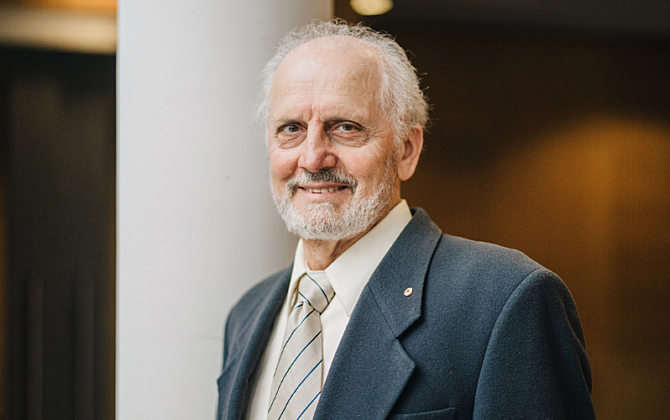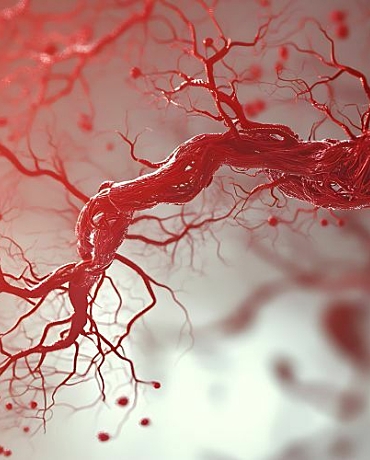World-renowned cartographer of the brain, Scientia Professor George Paxinos AO, from Neuroscience Research Australia (NeuRA) and UNSW Medicine has discovered a hidden region of the human brain. The region is found near the brain-spinal cord junction and Professor Paxinos has named it the Endorestiform Nucleus.
Scientia Professor George Paxinos AO
Professor Paxinos suspected the existence of the Endorestiform Nucleus 30 years ago but has only now been able to see it due to better staining and imaging techniques. Commenting on this discovery, Professor Paxinos says it can be likened to finding a new star.
“The region is intriguing because it appears to be absent in the rhesus and macaque monkey brains, we thought the endorestiform nucleus might be a feature of humans or humans and the great apes. However, a recent preliminary investigation of high power images of the rhesus monkey sections indicates the nucleus may exist in this primate,” said Professor Paxinos, adding, “there have to be some things that are unique about the human brain besides its larger size, and the Endorestiform Nucleus may be one of them.”
The Endorestiform Nucleus is located within the inferior cerebellar peduncle, an area that integrates sensory and motor information to refine our posture, balance and fine motor movements.
“I can only guess as to its function, but given the part of the brain where it has been found, it might be involved in fine motor control,” says Professor Paxinos.
The discovery of the region may help researchers explore cures for diseases including Parkinson’s disease and motor neuron disease.
Neuroscientists researching neurological or psychiatric diseases use Professor Paxinos’ maps to guide their work. Professor Paxinos’ brain atlases are heralded as the most accurate for the identification of brain structures and are also used in neurosurgery.
An increasingly detailed understanding of the architecture and connectivity of the nervous system has been central to most major discoveries in neuroscience in the past 100 years.
“Professor Paxinos’ atlases showing detailed morphology and connections of the human brain and spinal cord, provide a critical framework for researchers to test hypotheses from synaptic function to treatments for diseases of the brain,” said Professor Peter Schofield, CEO at NeuRA.
“It is truly an honour for Elsevier to be continuing Professor Paxinos’ legacy of publishing with us,” said Natalie Farra, Senior Editor at Elsevier. “His books are world-renowned for their expertise and utility for brain mapping, and for their contributions to our understanding of the structure, function and development of the brain.”
Professor Paxinos is the author of the most cited publication in neuroscience and another 52 books of highly detailed maps of the brain. The maps chart the course for neurosurgery and neuroscience research, enabling exploration, discovery and the development of treatments for diseases and disorders of the brain.
The discovery of the Endorestiform Nucleus is detailed in Professor Paxinos latest book titled Human Brainstem: Cytoarchitecture, Chemoarchitecture, Myeloarchitecture available for order this November 2018.
Available:
+ digital content in Prof Paxinos’ map room
+ 3D animation of the new region
+ selection of high res images
+ images of Professor Paxinos
Download above assets from Google Drive here
Media contact
NeuRA Media Department
email hidden; JavaScript is required+61 (0) 409 225 447
Sydney, Australia




